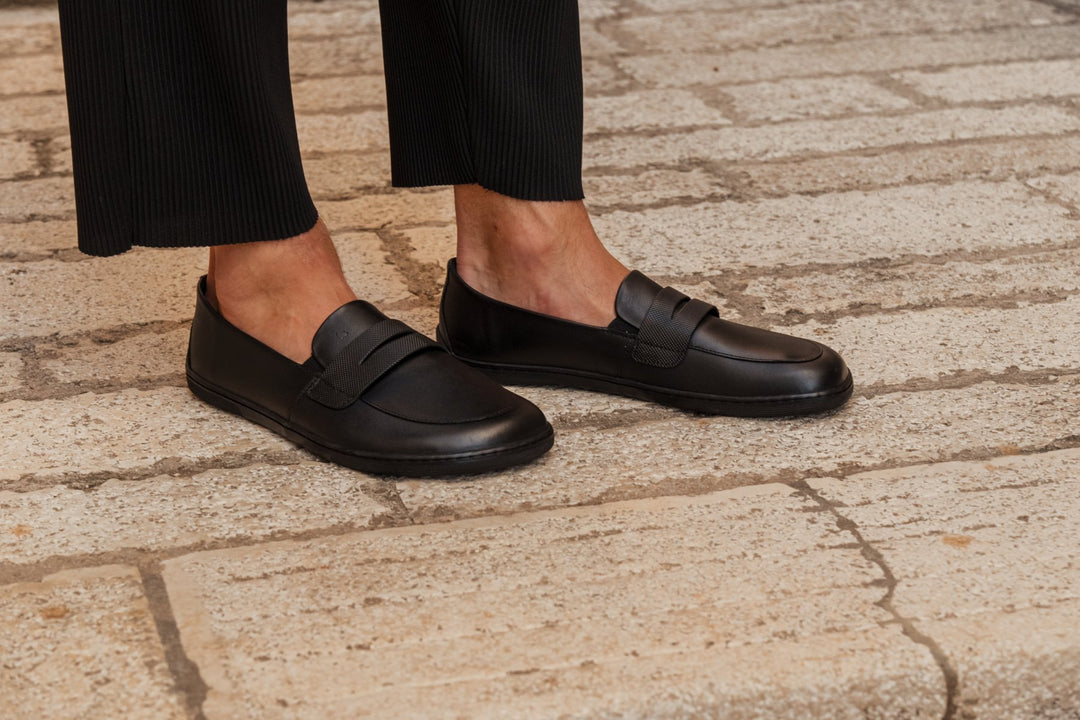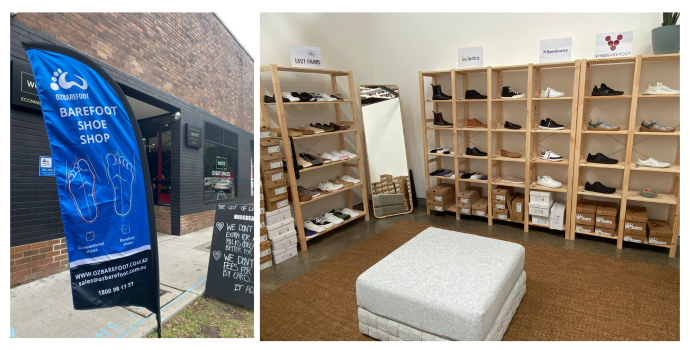Living in a concrete jungle has many perks, but it does make living in harmony with nature much more difficult than in rural settings. Human health thrives by being outdoors, connected to nature, and staying physically active.
These criteria clearly aren't a possibility for everyone, so we need strategies to bring natural elements back into urban environments. One important component of this solution is barefoot shoes.
Human bodies were developed for walking barefoot. It's been proven as an efficient strategy to optimize foot strength and mobility. Despite this, it's clearly not a realistic option on the hot and rough concrete surface downtown streets. Barefoot shoes offer a modern solution to a modern problem: weak, underutilized feet and the physical issues they cause further up the kinetic chain. Better yet, they do this while protecting you from the inherent hazards of walking on city surfaces.
Barebarics Sneakers: Barefoot Shoes for City Walking
Why Barefoot Shoes?
Barefoot shoes allow us to return to a more natural gait pattern which protects the integrity of the foot arch, the ankles, knees, hips, and even the back. The popularity of barefoot shoes has been soaring in recent years as more and more people discover how barefoot shoes can keep their bodies healthy and injury free long-term.
Despite their popularity, the main concern of barefoot shoes that up incessantly pops up is: "are barefoot shoes appropriate for hard surfaces?". This is an important question for anyone that spends a significant amount of time walking on concrete like suburb and city-dwellers.
The short answer is yes, barefoot shoes can be a great option on hard surfaces, but the long answer is slightly more complex. Keep reading to find out why.
Did you know humans have been walking on hard man made surfaces for thousands of years? Some of the earliest stone buildings were created in the Neolithic period (approximately 9000 years ago). Shoes back then were either non-existent or simple coverings with little structure.
The Question of Hard Surfaces
Barefoot shoes are thin soled, flexible, light-weight and wider in the toe box area which allows the foot to move naturally as opposed to being constrained in a conventional shoe. This increases the strength and flexibility of the feet and toes, but it notably provides less cushioning and physical protection against hard surfaces.

Based on this, it might seem that thick soled shoes with plenty of cushioning would be a safer alternative to barefoot shoes, but this isn't the case. When you wear regular shoes with cushioning, you're unable to detect the immediate sensory feedback of your gait pattern that barefoot shoes provide.
You can find more about differences in our article: Barefoot Shoes vs Regular Shoes: The Essential Differences
This means you're far more likely to walk with a heavy heel strike and slap the foot down unconsciously. Even though this doesn't feel uncomfortable in the moment, it causes minor stress on the joints that can accumulate into serious debilitating injuries over time.
Instead, when you wear barefoot shoes, you'll restore a more natural mid-foot or toe strike walking pattern that allows the body to use its innate shock absorbers: your muscles, tendons and ligaments. This is precisely what reduces wear and tear on the joints and makes barefoot shoes a superior option to regular shoes, perhaps especially on hard surfaces.
Read more about benefits of wearing barefoot shoes in our article: Health Benefits of Barefoot Shoes
Beforing fully jumping onboard with this idea, there is one important caveat to note. The harder the surface, the more demanding it will be on your feet, and the greater the potential for harm from poor walking patterns. If you wear barefoot shoes on cement and continue to heel strike, not only will it be uncomfortable, but you'll actually be doing more damage than if you just stuck to conventional cushioned shoes!
Working your way up to hard surfaces by ensuring you have properly developed movement patterns and foot strength is essential. Below we'll outline how to safely transition to using barefoot shoes in a city environment.
How To Safely Use Barefoot Shoes in the City
1) Work Your Way up By Starting with Soft Surfaces
Starting off your barefoot journey with more forgiving surfaces allows your feet to gradually build the resilience they'll need for firm ones. Walking barefoot in sand is a good option, or wearing barefoot shoes in parks, on trails, or in indoor settings that have cushioned floors like gyms.
2) Practice Proper Technique
It will take some time to retrain your brain to land toe first while walking. You can begin training this at any time with any type of shoe, and it will allow you to have an easier transition once you're ready for barefoot shoes on pavement.
3) Choose Thick-Soled Barefoot Shoes
Before you conclude that thick soles defeat the purpose of barefoot shoes, it's important to note that this means thick-soled relative to a barefoot shoe, not standard sneakers. This offers a great in-between transition option to provide some cushioning without completely compromising the increased foot mobility that barefoot shoes offer. This could be a temporary solution, or perhaps a permanent one if that's what feels best for your feet and body.
An interesting but perhaps comical looking tip to see how much force you're placing on your joints while walking is to try plugging your ears while you take a few steps. When you land heel first, you'll hear an internal thud with each step, whereas walking toe first should be completely silent.
Our City-Friendly Barefoot Shoe Suggestion
One of the best options you'll find available on the market today for a thick-soled barefoot shoe are Barebarics Sneakers. These shoes are shockingly good-looking and have a range of options for different occasions and stylish preferences. You can find them in either leather or vegan materials, and they all fit under the unisex category.

On top of their thick-sole and durable materials, these shoes have a more "classic" sneaker look compared to most barefoot shoes which makes them an incredibly easy style swap for your old city-walking stand-bys. You could even sport some of their more suave options in office settings with relaxed dress codes. For more formal office attire, an option like Be Lenka City might be more appropriate.
Conclusion
In summary, humans have been walking barefoot on hard surfaces like rocks, stone and wood for centuries. Though cement-laden cities are a modern phenomenon, they're a completely safe surface for most people to wear barefoot shoes on as long as you work up to adequate strength and mobility to handle it.












